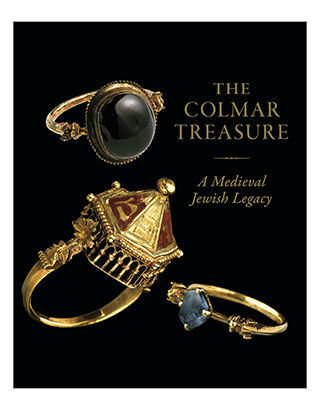
Published in conjunction with the exhibition, this exquisite illustrated volume reveals the fascinating history of the Colmar Treasure.
Buy NowA cache of jeweled rings, brooches, and coins—the precious possessions of a Jewish family of medieval Alsace—was hidden in the fourteenth century in the wall of a house in Colmar, France. Discovered in 1863 and on view in an exhibition at The Met Cloisters, the Colmar Treasure revives the memory of a once-thriving Jewish community that was scapegoated and put to death when the Plague struck the region with devastating ferocity in 1348–49.
A generous loan of the Musée de Cluny, Paris, the Colmar Treasure is displayed alongside select works from The Met Cloisters and little-known Judaica from collections in the United States and France. Although the objects on view are small in scale and relatively few in number, the ensemble overturns conventional notions of medieval Europe as a monolithic Christian society. The exhibition points to both legacy and loss, underscoring the prominence of the Jewish minority community in the tumultuous fourteenth century and the perils it faced.
Accompanied by a publication.
"Through one unknown family and their possessions—small, cherished and easily hidden—the exhibition bears eloquent witness to the lost Jews of Colmar." —The Wall Street Journal
"Tantalizing. . . . exquisite jewelry and miniatures reveal seldom seen and little-known glimpses of Jewish life." —The New York Jewish Week
"The intimacy and familiarity of the objects . . . particularly poignant and touching." —Our Town
The exhibition is made possible by the Michel David-Weill Fund.
Additional support is provided by the David Berg Foundation.
Jewish ceremonial wedding ring, from the Colmar Treasure, ca. 1300–before 1348. Gold, opaque and translucent enamel, 1 3/8 x 7/8 in. (3.5 x 2.3 cm). Musée de Cluny – Musée national du Moyen Âge, © RMN-Grand Palais / Art Resource, NY